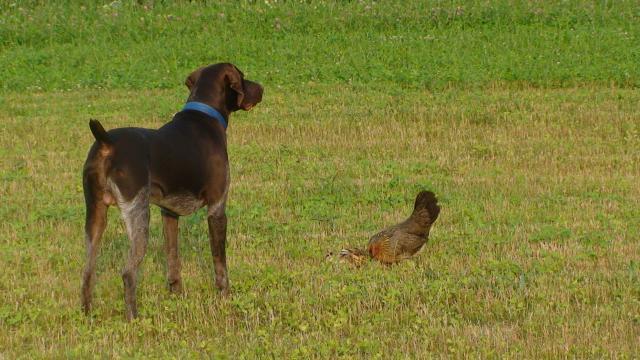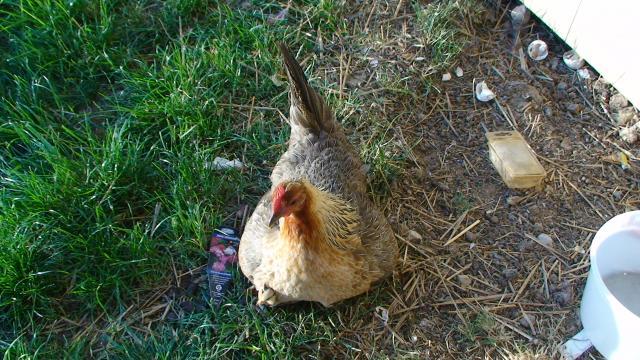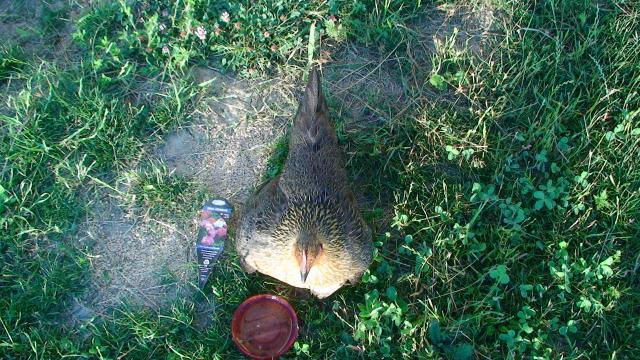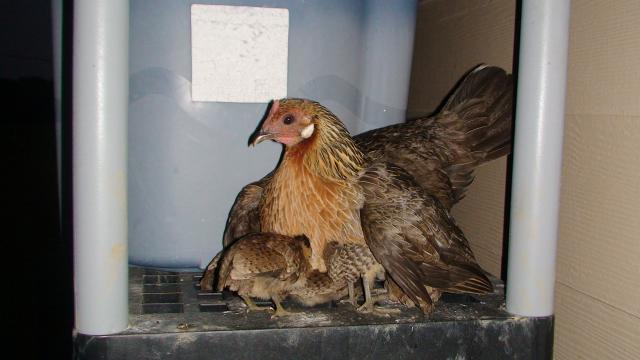With brood 2, Sallie comes off incubation duty to feed in morning about 1 hour after dawn. With brood 1 she came off during middle of day. I guess with this brood it is to avoid heat and with first brood to keep eggs from getting as cold. Spud still spends bulk of day near Sallie while latter on nest. When Sallie does come off nest and runs frantically about between foraging, feeding and water stations; Spud follows. I may have heard Spud make tidbit call and Sallie promptly altered course to investigate. If correct, then reversal in respect to whom is facilitating foraging of whom. Spud just now reaching 1/3 adult weight.
The running about of hen coming off nest is very similar to rooster running about all fluffed up at dawn. Feather posture and sustained rapid movement very similar. It is the running about during these time that I think is primary reason for chickens having dark meat in legs and thighs, otherwise all meat would be white since chickens otherwise no inclined for sustained excertion.





